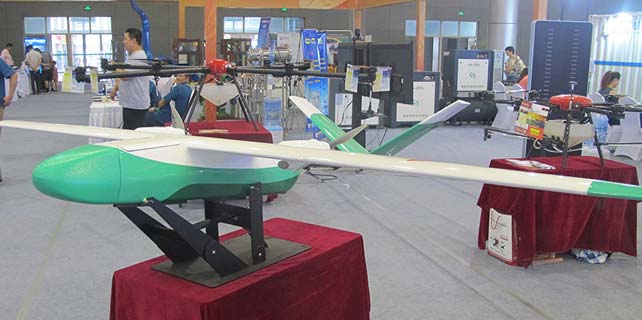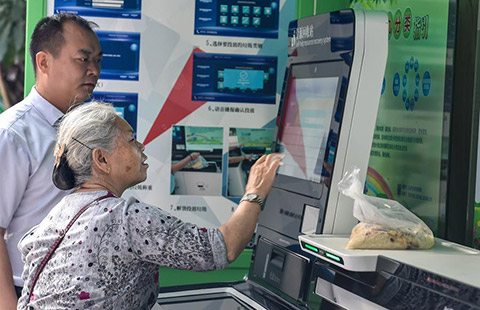

Because of the family planning policy implemented in the 1970s, China is experiencing the 4-2-1 family model, meaning a typical only- child will have to care for two parents and four grandparents. That also means the traditional way of aging at home comes with more challenges.
With rising living standards and better healthcare, people in China are also living longer. One third of the population - 438 million people - will be over 60 by 2050, the United Nations said. That would equal the entire population of the US at that time.
However, public senior-care facilities in China at the moment are far from enough to meet these projected demands. By 2010, China had 3.5 million nursing beds, catering to fewer than 2 percent of its senior population. In developed countries, the figure usually stands at 5 to 8 percent.
More than half of the world's aging countries have reached more than $10,000 gross domestic product per capita when they were first considered aging. But China reached the threshold in 2000 at less than $1,000 GDP per capita.
Recognizing the severity of the issue, the government has listed senior care as one of the priorities in its 12th Five-Year Plan (2011-15) and is encouraging more private capital in the sector.
China will increase the number of nursing beds to accommodate 3 percent of the elderly population by 2015, the plan said.
The plan also estimates that the market value for senior care will reach 450 billion yuan by 2015 and create more than 5 million jobs.
Apart from the opportunities presented by the rapidly changing demographics and the supporting policies, China's lack of experts and operators has also made it a particularly appealing place for prospective investors.
"Right now, we are in a position where we are relatively rare in what we can do," said Cole Wright, development director of Merrill Gardens, a senior-housing operator from the US, which has recently opened a branch in Shanghai.
"We've been working in a competitive market in the US for quite some time because it's already a very mature market. China is a very important growth market with more opportunities than elsewhere," he said.
Different stakes
However appealing China's demographics may seem, its elderly, among all its population, is the least willing to spend, according to a survey conducted by Yang from Tsinghua University.
"The GDP level in China is low and, for old people, it's even lower. Among all the age groups, people between the age of 70 and 80 have the lowest consumption power and willingness to spend," Yang said.
That, however, has not deterred most of the prospective investors. In fact, it has prompted them to start from the very high-end services and then move on to the entire chain.
"If you look at the senior-care industry in an economy such as China's, it's clear that the demographic need is real. But it's also not clear whether the Chinese are going to access senior care in the same way as we have in the West," said Benjamin Shobert, founder and managing director of the Seattle-based consulting firm Rubicon Strategy Group.
"So if you are an entrepreneur and you are trying to segment the market, it is better to focus on the least risky sector, which is the really high end. This is what has been driving most of the investment so far," he said.
 CES Asia: Concept cars, futuristic vehicles and intelligent driving
CES Asia: Concept cars, futuristic vehicles and intelligent driving
 2017 CES Asia held in China's Shanghai
2017 CES Asia held in China's Shanghai
 People interact with intelligent robot 'Xiaogui' in E China
People interact with intelligent robot 'Xiaogui' in E China
 Mother of three children becomes a successful entrepreneur
Mother of three children becomes a successful entrepreneur
 WWDC 2017: A glimpse at June's biggest tech event
WWDC 2017: A glimpse at June's biggest tech event
 China-developed drones at Silk Road expo in Xi'an
China-developed drones at Silk Road expo in Xi'an
 Visitors drawn to auto show in Shenzhen
Visitors drawn to auto show in Shenzhen
 Garbage disposal in S China's Guangdong
Garbage disposal in S China's Guangdong